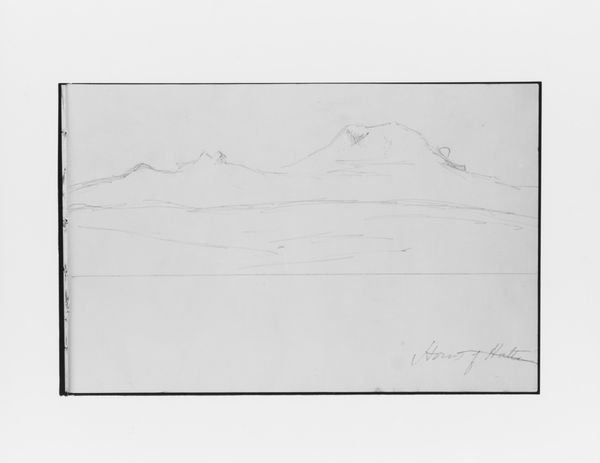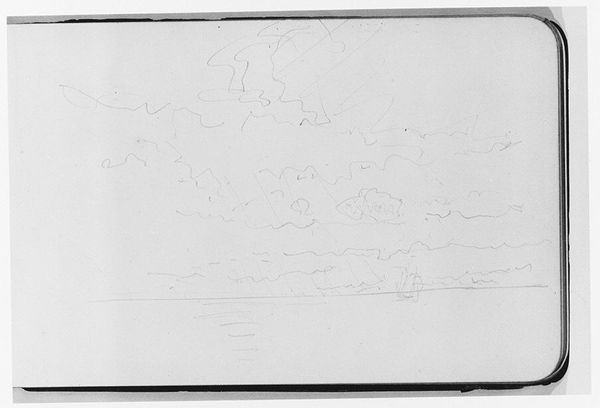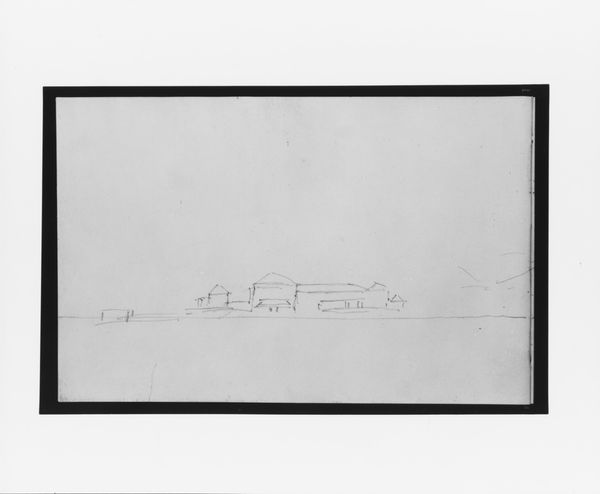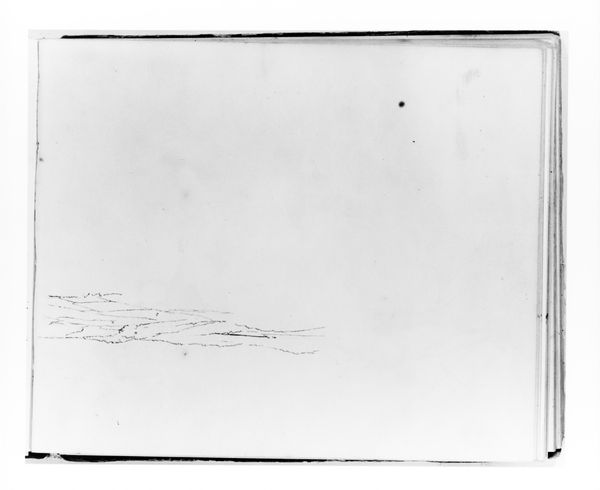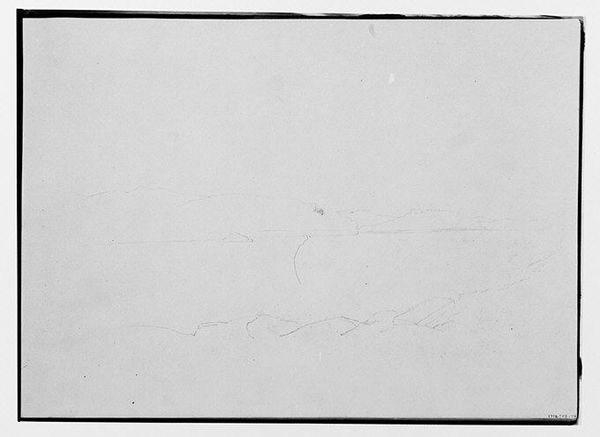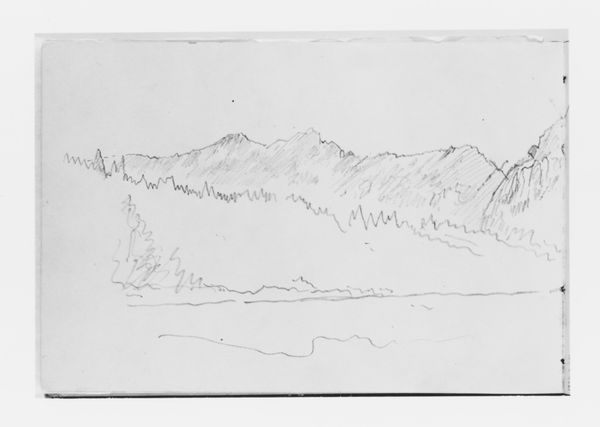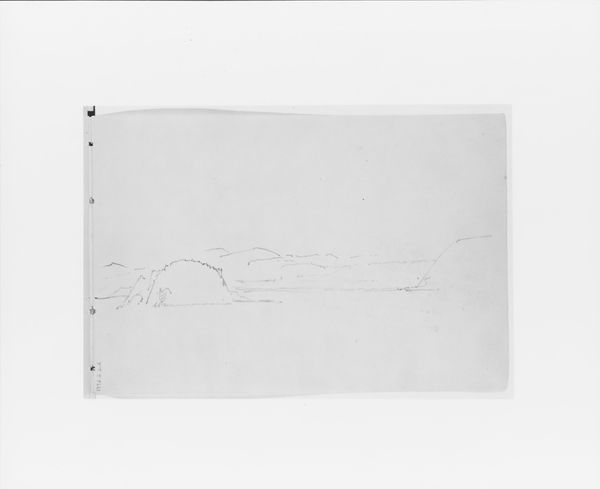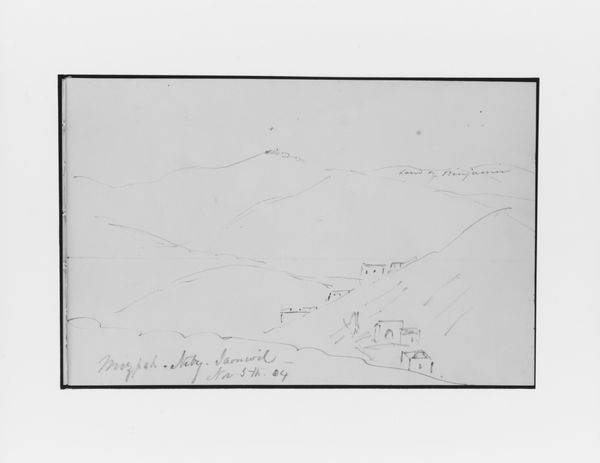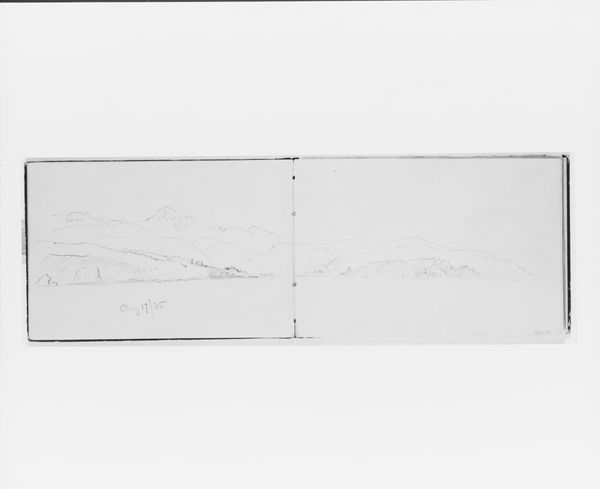
drawing, paper, pencil, graphite
#
drawing
#
landscape
#
figuration
#
paper
#
mountain
#
pencil
#
carved
#
line
#
graphite
Dimensions: 5 1/4 x 8 1/4 in. (13.3 x 21 cm)
Copyright: Public Domain
Curator: Here we have Mary Newbold Sargent's "Village and Mountain," dating back to 1904. It's a pencil and graphite drawing on paper, currently residing here at the Metropolitan Museum of Art. Editor: It feels quite delicate, almost ethereal. The pale graphite lines barely register the forms. You can make out suggestions of rolling hills, or perhaps distant mountains, but it all remains very vague, provisional. Curator: It certainly invites a slower, more contemplative reading. Knowing Sargent, and the time period, it makes sense to consider this piece within a larger history of women artists navigating the limitations placed on them by society and institutions. Her choice of landscape could be read as a quiet rebellion, finding freedom and expression in a traditionally accepted subject, while also perhaps alluding to themes of belonging, isolation and connection to the land, particularly given the gendered expectations surrounding women's roles and domestic space in the late 19th and early 20th centuries. Editor: I am struck by how minimal it is. Considering the materials – pencil and paper – readily available, commonplace even, it seems almost a study of restraint. I wonder about the paper itself, its texture, how it influenced the marks Sargent made. It feels deeply connected to the act of seeing, almost like a direct translation of observed reality onto the page using incredibly simple means. We see mountains because Sargent prompts us to create our own visual interpretation of what those forms signify and the work becomes a shared experience that links Sargent and us, the viewers, through our mutual human engagement with perception. Curator: Absolutely, there's a profound intersection between observation and expression at play. I think your attention to materials invites us to ponder on women artists having, throughout history, more access to the so-called ‘lesser arts and crafts’, which is due to prevailing social expectations limiting their educational and professional options in traditionally prestigious realms such as painting and sculpture. And, because these women, for example Sargent, had less access they began to think out-of-the-box by producing works on a more accessible material with no less critical implications. Editor: Ultimately, it’s a work about understated elegance, where less truly becomes more and transforms what would otherwise be simply graphite and paper. Curator: Indeed. This work makes us contemplate how art historical context continues to intersect, enriching contemporary understanding.
Comments
No comments
Be the first to comment and join the conversation on the ultimate creative platform.
